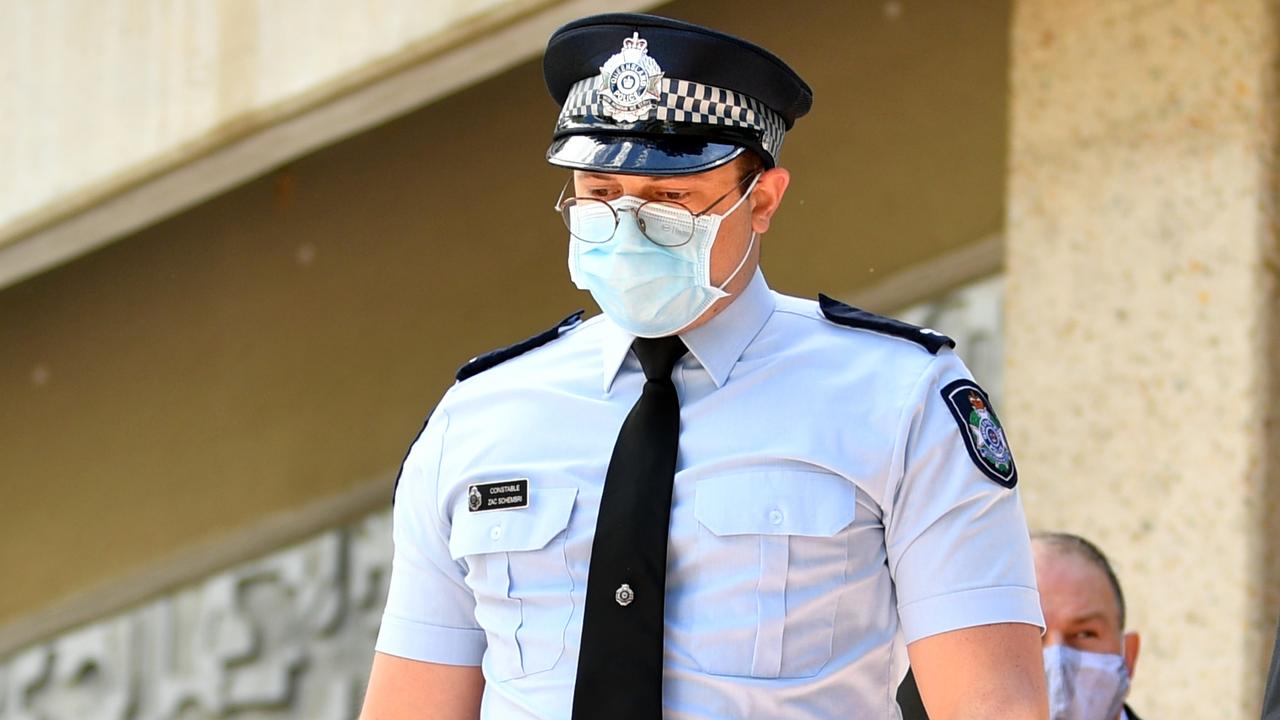Trevor ‘Noombah’ King: Shock bodycam footage reveals man’s final moments before custody death
Confronting body-worn camera footage of the arrest of an Indigenous man who died in police custody has been released by the coroner.
WARNING: CONFRONTING DETAILS
Confronting footage of the final moments of the life of an Indigenous man who died in custody has been released, with a coroner savaging paramedics for their “suboptimal” care of him after arrest.
Townsville man Trevor King – known culturally as Noombah – died in hospital on February 10, 2018 after being dragged to the ground and handcuffed following a violent confrontation with police in the early hours of the morning.
In his findings delivered on Tuesday, state coroner Terry Ryan cleared the actions of police who had responded, saying their actions were an “appropriate use of force” given the risk level.

But he said paramedics who had attended failed to make any meaningful assessment of him as Noombah, 39, became unresponsive on the roadside.
“It was also apparent there was no urgency from police or paramedics in a situation where Noombah was critically unwell,” Mr Ryan said.
During a coronial inquest into his death, the court was told Noombah’s partner had called triple-0 twice after finding him sniffing petrol and threatening to hang himself.
Noombah had a serious heart condition and had not been taking his medication for high blood pressure and cholesterol.
Body-worn camera footage captured his confrontation with police at 1.34am, where he had to be restrained.
Constable Zachary Schembri used a move he described as being similar to a Lateral Vascular Neck Restraint (LVNR).

By the time paramedics attended, Noombah was unconscious and had saliva running from his mouth.
He was taken to hospital at 1.49am, but was pronounced dead at Townsville Hospital later that morning.
On Tuesday, Mr Ryan said Noombah’s cause of death was cardiac arrest in a person with “pre-existing severe ischaemic heart disease who was restrained and had consumed volatile hydrocarbons”.
Mr Ryan said the paramedics provided “suboptimal care” as they did not carry out any medical assessments.
“(Their) evidence was that they were apprehensive about the scene for various reasons,” he said.
“This included that they were flagged down by police, it was not the job they were originally tasked to attend and there were many people at the scene. It was a matter of situational awareness and safety.”
The court was told the paramedics were not made aware of the urgency attached to Noombah’s condition.
“After it was identified he was in cardiac arrest, the level of treatment was also suboptimal,” Mr Ryan said.
Consulting forensic pathologist Johan Duflou concluded it was unlikely Noombah had his cardiac arrest while restrained, as the bodycam footage was “equivocal” as to whether there was any pressure on his body during the arrest.
“There is the added unusual aspect of Noombah having an apparent cardiac arrest some minutes after the restraint was relieved,” Mr Ryan said.
He accepted Constable Schembri did not place his body weight on Noombah while on the ground and did not kneel or lean on his back.
“I consider that if the police officers applied pressure to Noombah’s chest or neck, it was not for a sufficient period to cause positional asphyxia or cardiac arrest or loss of consciousness,” Mr Ryan said.
“With the benefit of hindsight, it would have been preferable if the police officers had allowed Noombah to return to his home … however, I accept police would not simply leave him without some form of intervention.
“The decision to restrain Noombah and take him to the ground was an appropriate use of force in this instance given the risk level, it was also tactically sound not to use other force options … (such as) a baton, taser or OC spray.”
Mr Ryan recommended Queensland Police review the future use of LVNRs and implement a mandatory requirement for officers to request priority medical assessment for people in custody whose “demeanour rapidly declines from a state of heightened emotion and agitation to one of apparent compliance”.
He also recommended the Queensland State Government works with primary health networks and Indigenous communities and organisations to develop “culturally appropriate referral pathways for First Nations people in mental health crisis” as an alternative to hospital transport.




